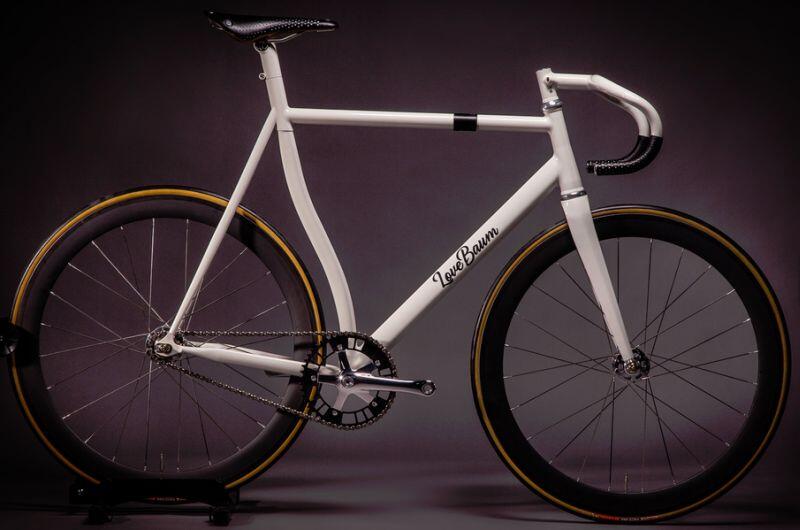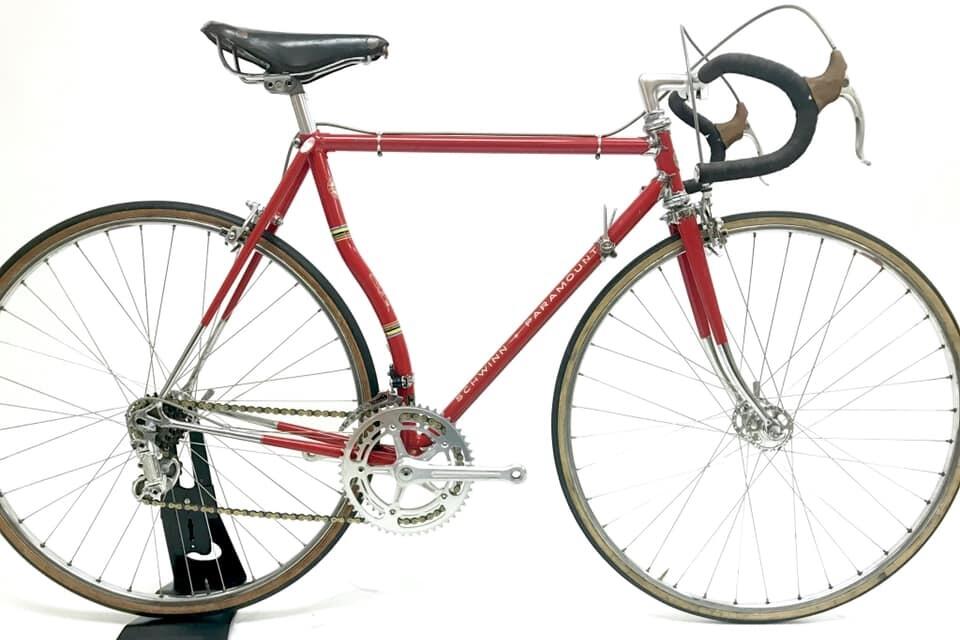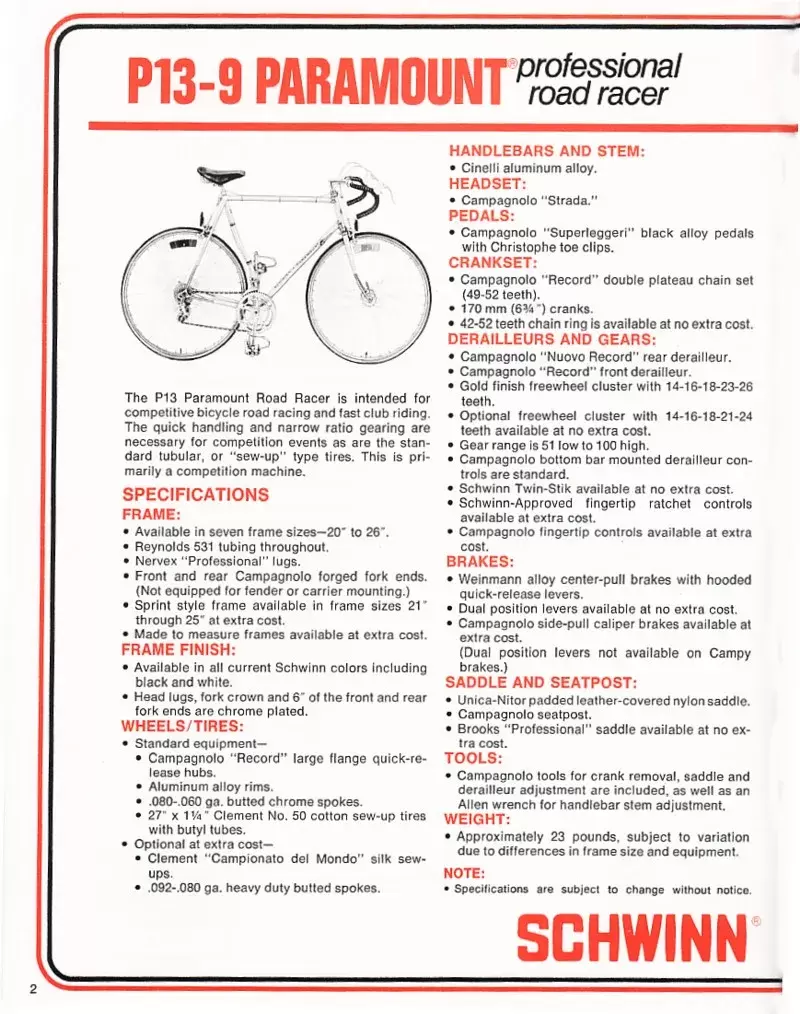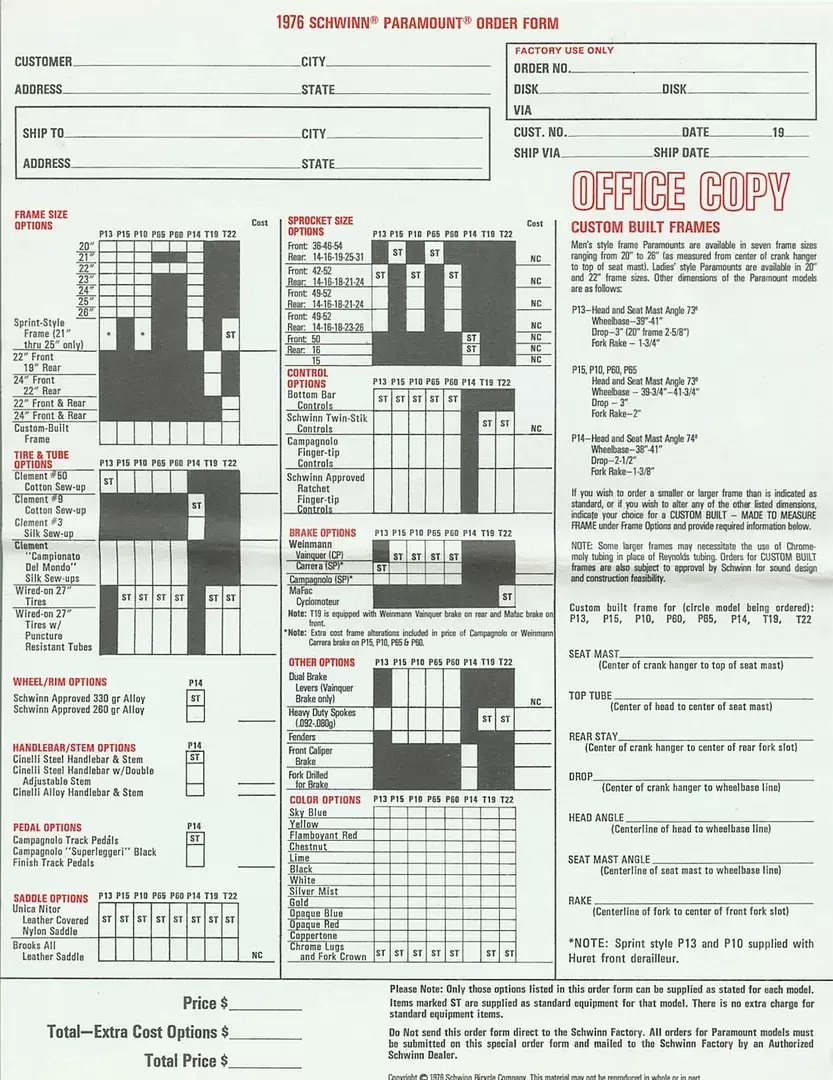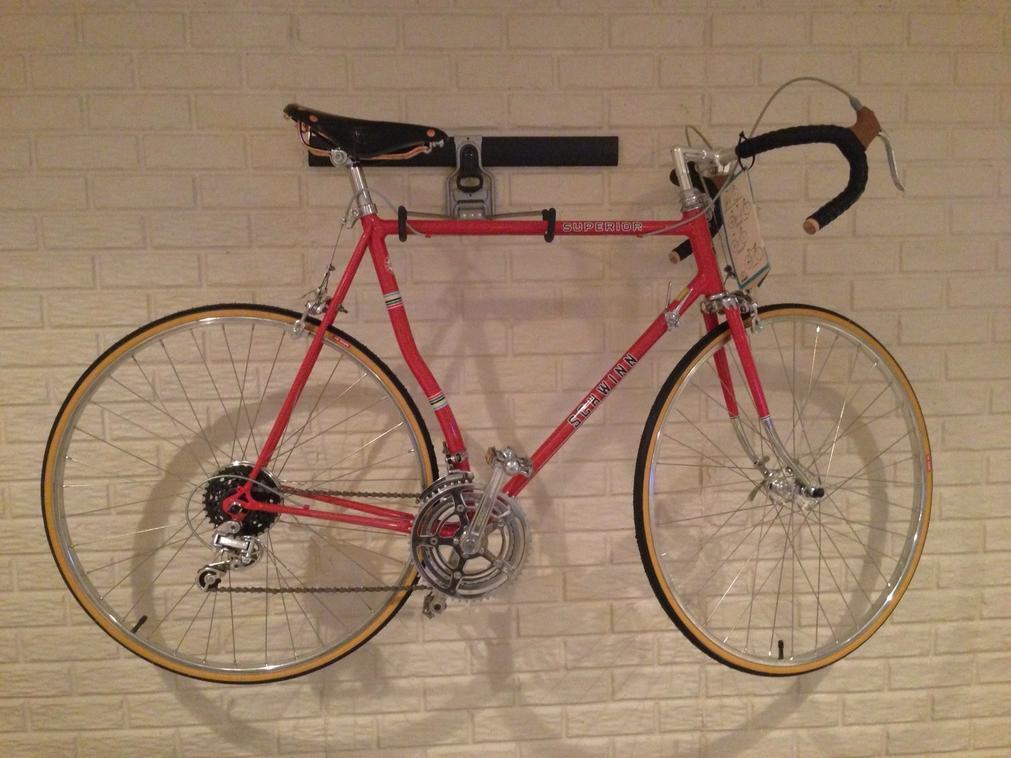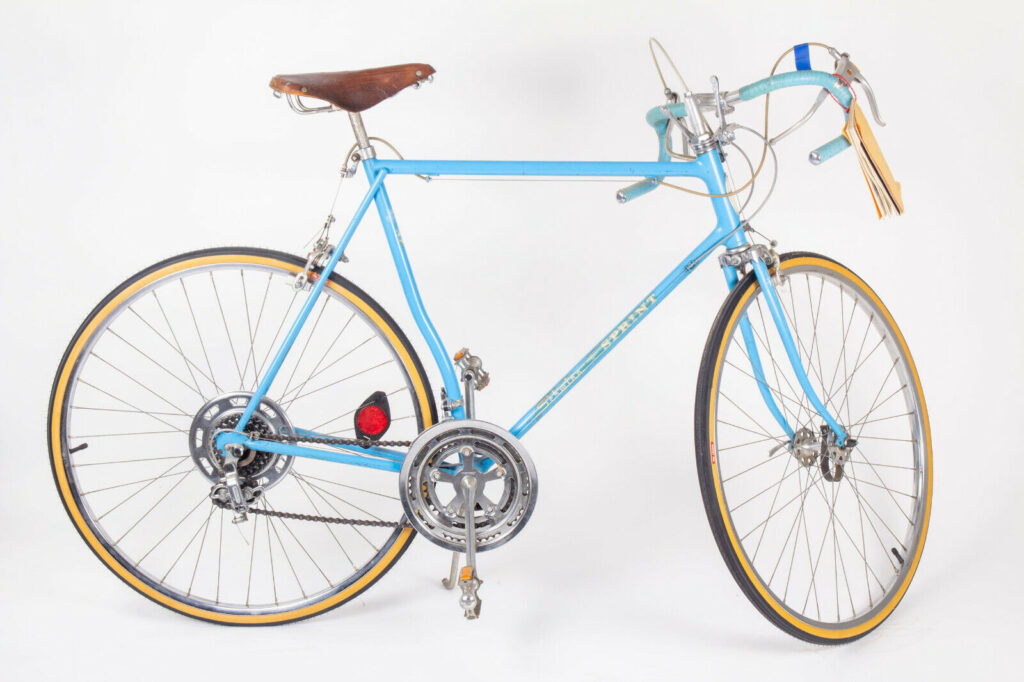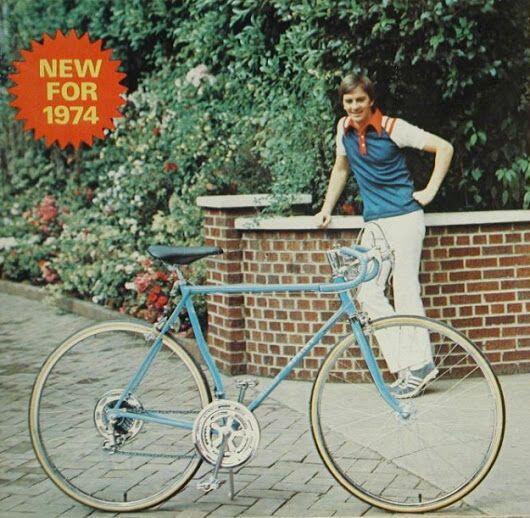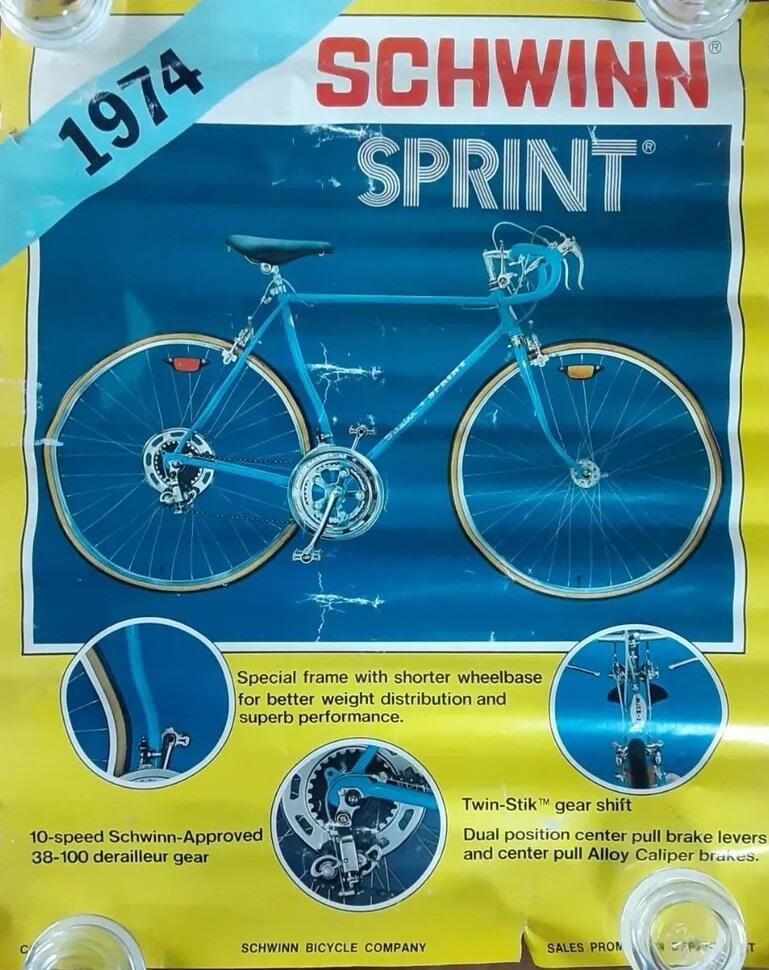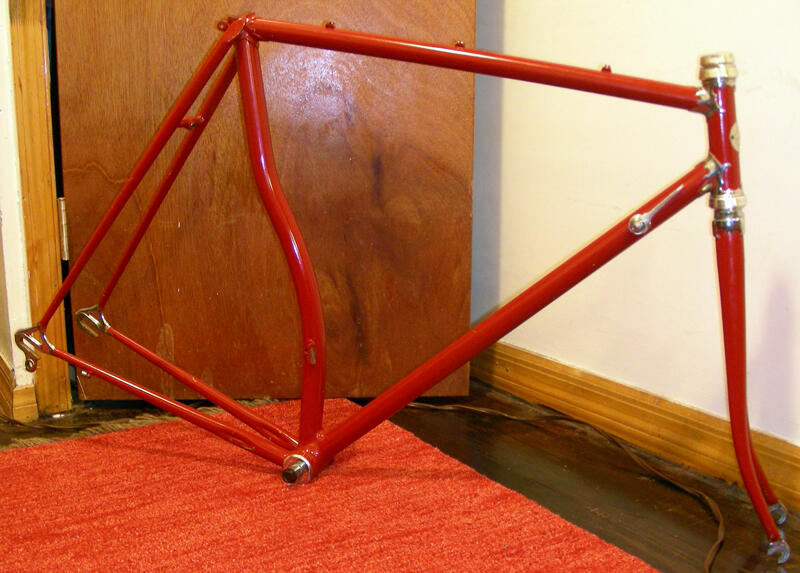 Taking a time machine back to the year 2011, here’s a very rare frame set that passed through my hands. It’s a 1975 Schwinn Paramount P13-9 with a curved seat tube. This was referred to by Schwinn as a “sprint style” or “short-coupled” frame, and was an option when ordering a custom frame in 1975, 1976, 1977, and 1978. The feature was available on the P14, P10 and the P13 models (and the T22 tandem). The good folks at Bikeforums’ Classic & Vintage message board helped me identify it, especially member Scooper, who shared the original catalogs and order form. This particular one was customized in several ways. Read on to learn more!
Taking a time machine back to the year 2011, here’s a very rare frame set that passed through my hands. It’s a 1975 Schwinn Paramount P13-9 with a curved seat tube. This was referred to by Schwinn as a “sprint style” or “short-coupled” frame, and was an option when ordering a custom frame in 1975, 1976, 1977, and 1978. The feature was available on the P14, P10 and the P13 models (and the T22 tandem). The good folks at Bikeforums’ Classic & Vintage message board helped me identify it, especially member Scooper, who shared the original catalogs and order form. This particular one was customized in several ways. Read on to learn more!
The P10-9 Deluxe Touring model would have had top tube cable guides brazed-on, but the P13-9 model Professional Road Racing model would have used Campagnolo bolt-on steel top tube cable clamps for the rear brake cable, and bolt-on downtube shifters. It was modified at some point later with braze-on cable guides and shifter mounts. The serial number was E7582, making it the 82nd frame made in May of 1975.

Paramount Sprint from the COR-Velo Collection
Curved seat tubes are typically associated with track racing and time-trial bicycles, where the curve allows the rear wheel to be moved further forward than standard frames, thus shortening the wheel base. The pros & cons of a curved seat tube are discussed in depth in this Brainy Biker article. In summary, a shorter wheel base makes for a stiffer rear triangle, translating to better acceleration and climbing. This custom Baum track bike is a good example:
However, this often comes at the expense of stability and is not usually preferred for bikes meant to carry racks and bags. Therefore it’s not seen on touring bikes, which prize ride comfort and sedate handling over speed and stiffness. That didn’t seem to stop the wild and crazy engineers at Schwinn! The now-defunct Waterford website (the Schwinn factory that made the Paramounts and was later spun off as a separate company) explains that “this design featured a seatmast which curved around the rear wheel, allowing a shorter wheelbase. It was offered to touring riders as a way to improve climbing by shifting the weight distribution rearward.”
The 1975 Paramount P10 / P15 Deluxe Touring one-sheet touted it as:
This option design, first developed for hill climb racing, has been refined by the Schwinn team of engineers to combine a truly racing style frame with the components of a fine touring bicycle.
Below is the one-sheet for the P13-9, which is the model I had. In keeping with the road racing pedigree, I assume it probably had a somewhat shorter wheel base than the Deluxe Touring models:
Here is the original dealer order form from 1976, showing all of the options that buyers could select when purchasing a Schwinn Paramount:
The “short couple” curved seat tube was standard on 22″ and 24″ tandem models, and appears in both the 1977 and 1978 Schwinn Catalogs (click the link to open the catalog pages). Below is an outstanding Paramount tandem seen on the “Schwinn Lightweight Lovers” Facebook group.
The owner commented on the curved seat tube:
The funny thing about the tandems is that over the years, they changed their story for why they curved the seat tube. At first they called it a short coupled frame for handling and such, but later on they claimed that the curved tube was in order to bring the rear seat farther back over the tire and to provide more room for the stoker’s cockpit. Either way, the boom and space between the stoker’s seat and the captain’s seat is an inch shorter than my Gitane tandem of the same age.
There were other Schwinn bicycle models with a similar bent seat tubes. Below is a custom Superior made in April 1974, which the owner describes as a “one-off prototype”:
Other than that one-off Superior and the Paramounts, Schwinn also put curved seat tubes on a lower-end model called the “Sprint”. Available from 1974-1976, it used heavier-gauge tubing than the Paramounts and was built using their proprietary electro-forge construction technique. Sales literature refers to the curved seat tube as a “shorter wheelbase for better weight distribution and superb performance“. Below is a typical Schwinn Sprint:
Here’s some of the Schwinn Sprint sales literature, as well (click to enlarge). The guy on the left looks pretty stoked about it!
Hopefully this article will help Schwinn fans learn more about their bikes in the future. A Paramount with a curved seat tube should fetch upwards of $800 for a frame and between $1200-$2000 for a complete bike. Given their rarity, it’s a seller’s market. The Sprints are much more common, selling in the $175-400 range. The pictured one is from an eBay listing for $500, is all original and in very good condition. Remember: don’t pay Paramount money for a Sprint! If I missed any info or you have one of these bikes yourself, let me know and drop me a line in the comments section.

